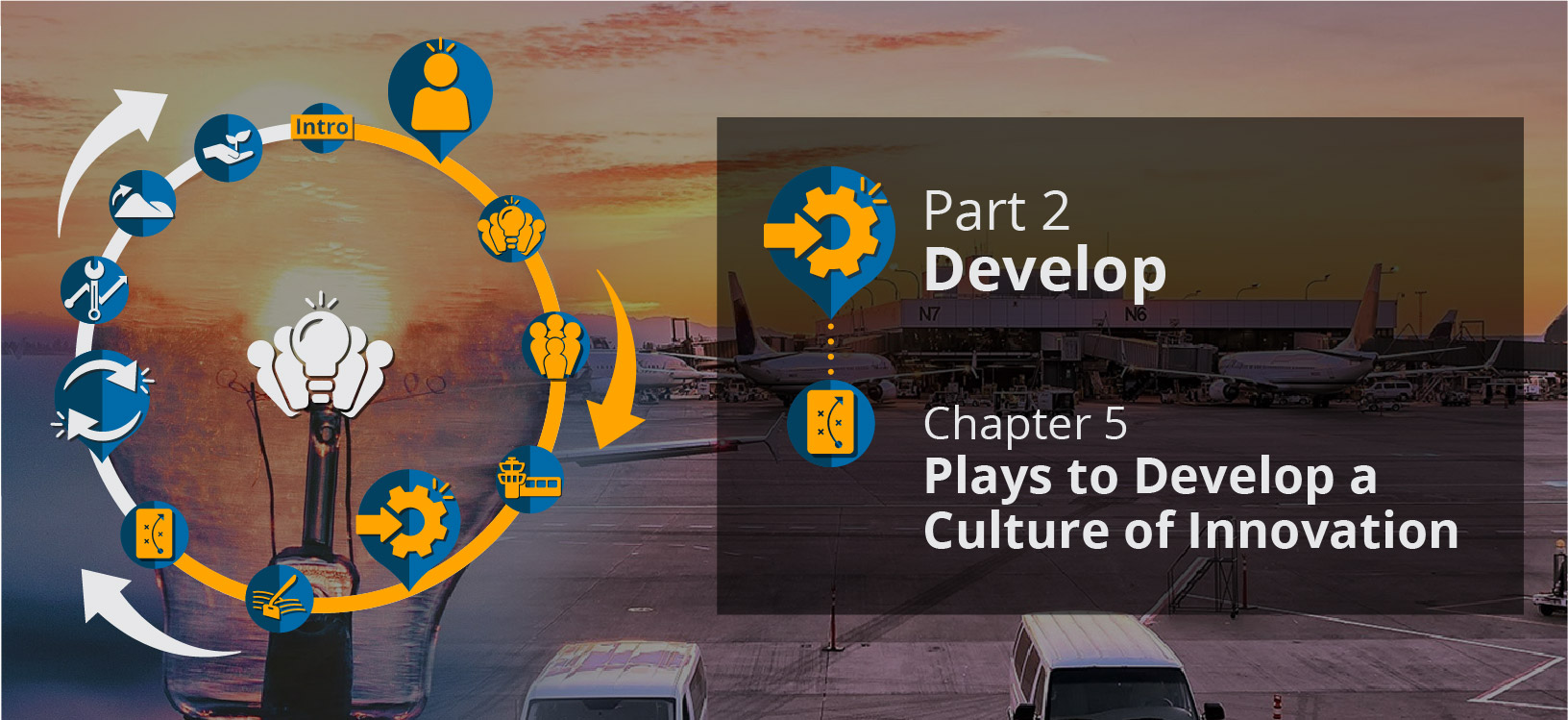

This is a Deep Dive page. Select the chapter for the Fast Track
Play 13: Focus on the Long Term (Strategy & Policy)
Innovative leaders know that sustainable investment in innovation starts with them. They need to set the tone for the organization through the strategic plan by clearly articulating how innovation impacts and relates to meeting organizational goals. They can also formalize these goals in the form of an innovation plan or charter to help energize innovation strategies.
Invest in Long-Term, Sustainable Innovation Strategies
Innovative leaders
- Share their fears. Recognize the need to build trust with employees in order to create long-term, sustainable innovation strategies together. Seek opportunities to openly share information (both good and bad) with employees, whether in staff meetings, lunches with cross sections of the organization, or feedback forums. This is an opportunity for employees to not only share challenges they are facing but also have open dialogues about potential solutions.
- For instance, when there was a sudden jet fuel supply shock in the 1990s, Southwest Airlines' policy of sharing information enabled the company to keep everyone informed as fuel prices continued to rise. In this spirit of openness, Southwest's CEO at the time, Herb Kelleher, sent a memo to pilots asking for their help. As a result, the pilots discovered ways to rapidly drop fuel consumption without compromising safety or service.1
- Move mountains. Build trust by finding ways to reduce the bureaucracy of systems, especially approval processes, that slow down action and impede innovation. When employees see how their individual efforts affect an airport's performance, it instills a sense of ownership. Tie recognition and rewards to the cultural values associated with innovation, like collaboration, excellence, and integrity. In this instance, compensating teams rather than individuals can reduce unhealthy competition among staff and encourage cross-functional collaboration. Innovative leaders can also continue to inspire employees through idea competitions. Finally, eliminate projects and processes that are no longer contributing to the goals or continuous improvement of the airport to keep things innovating and improving.
Monitor Culture to Ensure it Reflects Long-Term Objectives
Innovative leaders
- Evaluate the vital signs. Keep a pulse on the culture. This is just like caring for and nurturing one's own body, making necessary adjustments to nutrition, healing, and exercise to increase strength. Signs of a healthy, innovative culture are positive employee engagement and productivity, low turnover, minimal office politics, and a focus on continuous learning. When hearing negative feedback, one step toward an innovative culture is to consider revisiting employee goals to confirm their alignment with the strategic plan and innovative values. Help employees make plans to align goals this way. Plans should reveal where issues are occurring, and they can also identify solutions, like getting professional development in a particular area. Make sure to check in with employees on a specific date to help them keep progress moving.
- Provide a sense of safety and security. Constantly communicate and train employees on clear organizational values that support innovation. This gives employees a sense of security because they understand what behavioral norms are and can act accordingly. Collect and assess feedback focused on employee satisfaction, in regular small-group communications with individuals and in cross-functional meetings, to ensure alignment of core values and strategies.
Conduct future trend analysis
Innovative leaders
- Believe the future is bright. Do not rest on past accomplishments, but keep an eye on long-term trends to help future proof an airport. Continually learn about the latest developments and anticipate future changes to better understand how to translate them into strategic organizational changes. Communicate these changes, and incorporate them into new airport goals. This process keeps up with the evolving industry and reflects a culture that embraces change and flexibility.
- Are on trend. Seek to understand what might impact the organization in the near, medium, and long term so the airport can evolve and improve to keep up. Continually look at aviation industry data sources to find out what is changing. Go to reputable industry sources that provide accurate, reliable, and comprehensive data. Tie all facts and data in a persuasive document to share with other leaders to build their case for change.

1 Jane Adler, “7 Strategies for Sustained Innovation,” Innovation Management, June 9, 2005, https://innovationmanagement.se/2005/06/09/7-strategies-for-sustained-innovation/.

